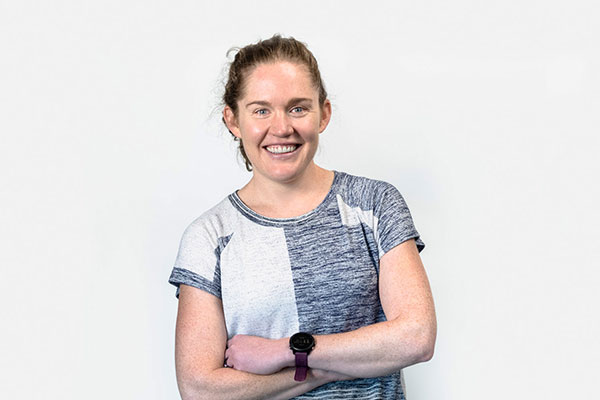GOLF SHOES, FASHION AND FUNCTION - OPTIMIZING THE POWER & PRECISION OF YOUR SWING THROUGH FOOTWEAR
By  Dan Feeney
Dan Feeney  Kate harrison
Kate harrison
Follow on ![]() @Dfeeney31 and @running_geek
@Dfeeney31 and @running_geek

Quick Takes
- Success in golf requires a balance between peak power and how precisely you can swing.
- Golf shoes can incorporate fit elements that improve athlete proprioception and may improve shot accuracy.

Dan’s Take:
Golf is a fantastic example of Fitt’s Law regarding the tradeoff between speed and accuracy. Fitt’s Law says that more accurate tasks take longer to complete than tasks where you can be less accurate. There is a strong parallel to driving golf balls where most high-level players report their best performance comes from swinging between 70-90% of their maximal output. In this case, speed refers to clubhead speed, and accuracy is where the ball lands. The BOA Benefit of Power & Precision highlights this tradeoff and our research focuses on ways to provide increased sensory feedback to golfers and provide fit, freedom, and flexibility during the swing, which we have seen improve consistency and accuracy.

Kate’s Take:
Golf has unique demands compared to many other sports. Athletes need to generate high forces, directed with pinpoint accuracy. Furthermore, they need to be able to efficiently walk several miles per round and to play as well on the first hole as on the eighteenth. The tradition of style in golf also necessitates a shoe that makes a statement about your style as well as your skill. However, one should not have to make a choice between fashion and function.

BOA’s Take:
At BOA, we believe your shoes are more than a fashion accessory, they are a valuable tool that impacts your performance. Whether you play in spikes or choose to go spikeless, selection of your shoes is on par with that of your driver, putter, and golf balls. Your shoes are the conduit of force and motion between your body and the ground. Over a round of golf, a consistent connection between your foot, the shoe, and the grass is critical to produce the power, accuracy, and repeatability needed for a competitive golf game. Whether you are playing a weekend round with your buddies or competing for a Green Jacket, the BOA Fit System will help you make the most of every shot.

FootJoy HyperFlex BOA
Research on the Topic
There are a few key (and maybe frustrating) skills to achieving success in golf. Not surprisingly, Dorsel and Rotunda showed that drive distance, accuracy, reaching the green in regulation (two fewer shots than par for a given hole), and putting are the primary determinants of performance in PGA players. Interestingly, drive accuracy was a better predictor of performance than drive distance alone.
Long drives come from a combination of X-Factor (Stretch), creating large ground reaction forces, and- of course- the orientation of the clubhead at impact. X-Factor is the difference in the angle between your shoulders and hips at the top of the backswing. Larger X-Factor angles- meaning your shoulders rotate farther back than your hips- generally lead to longer drives. Notably, a rapid increase in X-Factor at the top of the downswing- called the X-Factor Stretch- may be even more important for long drives (Cheetham et al., 2000). Once you solve the rotation of your hips and shoulders, the next step in a long drive is producing a large force with the lead leg during the downswing. Not only do you want to produce a large force, you need to direct that force intentionally to optimize drive distance. Todd Pataky showed that golfers who don’t produce force on the lateral edge of their lead leg at the end of the downswing may be leaving distance on the table. Taken together, golfers need to rotate their shoulders farther posteriorly than their hips, lead the downswing from their hips (creating a larger X-Factor Stretch), and shift their force onto their lead leg once their club is vertically oriented in the downswing. With the biomechanical secrets to long drives covered, let’s move onto accuracy.
Golf instructors work with players to optimize the balance between power and precision. By swinging at 70-90% effort, you will still drive the ball quite far, but your accuracy will be dramatically better than if you swung at 100% each time. While many PGA pros could drive the ball 400 yards or more, we would likely see higher scores and hear “fore!!” a lot more frequently if they did. The secret to drive accuracy is not as clear as drive distance. While it may seem straightforward to repeat the same exact motions each drive, golfers need to adapt to varying weather, terrain, and course conditions. Because the golf swing is so fast, there is very little time to consciously adjust your motion mid swing. Moreover, there are many different combinations of joint angles that can result in hitting the ball with the same clubhead orientation (something we call motor abundance in biomechanics). As a result, highly skilled golfers are able to make subconscious, miniscule adjustments to optimize their swing. Better fitting shoes may offer improved proprioception – feedback to the central nervous system on the body’s position in space – similar to the effect of taping an ankle for agility sports. The ideal shoe will provide a consistent connection between the foot and midsole to transfer force during the swing while providing sensory feedback to the golfer.

How we test
At BOA, we test our golf shoes from the ground up. We use Novel pressure insoles to understand how our configurations affect the fit and pressure profile during swings and while walking. For example, in our analysis below, we compared a single dial and dual dial golf configuration to observe how independent adjustment of the dials can change the pressure distribution on top and beneath the foot. In each image, the left heat map shows the pressure on top of the foot while the right shows the pressure on the bottom (plantar aspect) of the same foot during three parts of the gait cycle: heel strike, mid-stance, and toe-off.
We then test golfers in our lab using a 3D motion capture system with inground force plates to see how different shoe fit profiles affect an athlete’s force production and body movements. Finally, we have our TrackMan radar system to study ball distance, direction, and club position to ensure that our innovations translate to meaningful results in golfers’ performance.

What does this mean for retail?
Style is ingratiated in the culture of golf, and there is something to the saying, “look good, feel good, play good (sic),” but don’t overlook the performance value of the shoes on your wall. Much like the clubs and golf balls in your store, each player may play best in a specific type of shoe. Working with customers to find shoes that will provide a precision fit when they need it can be a crucial point of sale. If we start selling shoes likes drivers, we can maximize player performance from the first hole to the eighteenth.
What does this mean for the athlete?
Chances are, you’ve invested a good chunk of change into the tools you carry around in your bag – not to mention the time it takes to research and test the latest innovations on the market. It’s time you put the same energy into what you put on your feet. If not, you may be leaving a few strokes on the table.
Concluding remarks
Golf shoes are essential pieces of equipment just like your clubs and golf balls.
We can be found in twitter .@Dfeeney31 and .@running_geek